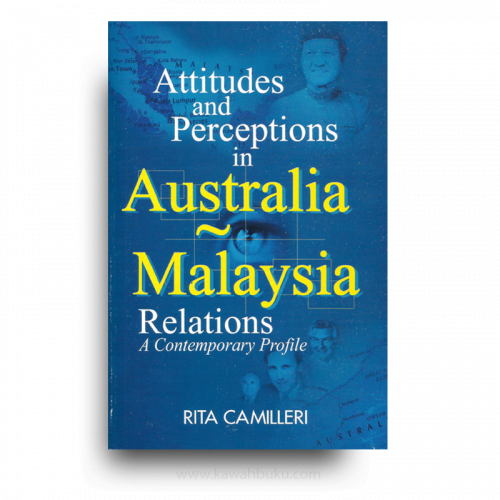Attitudes and Perceptions in Australia-Malaysia Relations: A Contemporary Profile provides the reader with a very useful historical chapter, which also lays the background for the author's study of a fifteen-year period of relations between the two countries. The period from 1985-1999, coincides with the term of Malaysia's fourth Prime Minister, Mahathir Mohamad whose centrality in Australian-Malaysian relations is not missed by the author. Camilleri has absorbed all the information of a troubled relationship and given it a sensitive treatment that is at once objective and fair to the many protagonists in her narrative.
Of course, the author makes it clear from the outset that the work is basically Australianoriented in that it self-consciously investigates Australian attitudes and perceptions in that relationship, particularly through analyzing the coverage of events by the Melbourne Age newspaper. However, throughout the book nowhere is there any hint of an overly critical view of Malaysians and their attitudes in the episodes by the author herself. It anything, Camilleri often takes her Australian compatriots to task more than she does the Malaysian counterparts involved the episodes.
Attitudes and Perceptions in Australia-Malaysia Relations: A Contemporary Profile revolves around six prominent episodes, which have created problems and ripples in the state to state and people to people relationships between the two countries. These were the Barlow-Chambers case, the Embassy and Turtle Beach incidents, the Raja Bahrin-Gillespie affair, the "recalcitrant Mahathir" and the "Anwar" episode. Camilleri has covered the episodes empathetically, recounting in some of the cases human dramas which have generated much angst for people on both sides, while in others, dissecting episodes which have been largely state-to-state incidents that have invariably soured official relations.
The meticulous examination of opinions, views and perceptions from multiple angles, including the Malaysian media and opinion leaders to these episodes provides more than a sufficient basis often for the reader to draw his or her own conclusions. On her own part, Camilleri is concerned that cultural differences have sometimes been needlessly reinforced by the poor handling of the events by the media and by the actions of protagonists themselves, not forgetting the respective governments. To quote, "… [T]he 'mutual obsession' with a difference, particularly cultural difference, has obscured much that Malaysia and Australia have in common as middle-sized powers, two multicultural societies striving to establish their national identity and their place in the region and internationally."
It strikes one from reading the book that frequency and regularity of contacts between two countries such as Australia and Malaysia coupled with close historical ties are crucial factors that have propelled "irritations" in relationships. Herein lies a basic if paradoxical dictum of international relations: cooperation and conflict are virtual twins of any dyadic set. Their absence may even imply the absence of any meaningful relationship. Indeed, looking at contemporary Australian-Malaysian relations, it can be said to be no worse than, say, Malaysian-Singapore relations today, and if truth be told, both sets of bilateral relations by most measures trade, investment, tourism, education must be among the closest in the Asia Pacific region.











Reviews
There are no reviews yet